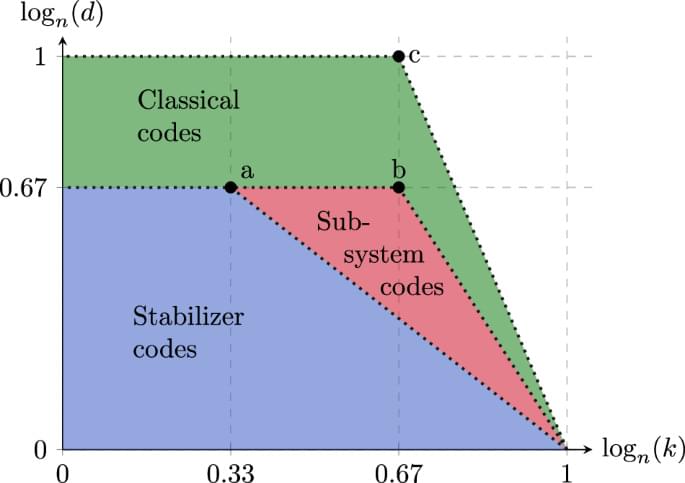Trials have been completed on a new weapon system that directs a number of high-powered beams onto a single target.







Quantum error correcting codes are inefficient when implemented on platforms with local connectivity in two dimensions, which motivates platforms with 3D connectivity and codes applicable in these conditions. Here, the authors show how to transform any CSS stabilizer code into a 3D topological code, leading to codes with optimal asymptotic scaling in 3D.

At the center of all leading particle physics labs are the particle accelerators that make the research possible. But just why are particle accelerators necessary? What do they do? In this video, Fermilab’s Dr. Don explains it all.
Quark gluon plasma: • quark gluon plasma.
Fermilab physics 101:
https://www.fnal.gov/pub/science/part…
Fermilab home page:
https://fnal.gov

Such a cool idea: a 1 km diameter exoplanet telescope lens built from self-assembling subunits could image other worlds with incredible detail.
With the recent SpaceX Starship orbital flight tests, it is time to commit to building the largest physically possible space telescope. Such a telescope would peer deeper into the universe than any before it, answering fundamental questions: are we alone? What do Earth-like exoplanets around other stars look like? How did we get here? What weird stuff awaits discovery? Where is the limit on human ambition to know what is in our universe? The Monster Scope answers these questions. Monster, because of its enormous scale, grotesque in its ambition. Monster, from the Latin root meaning a revealed thing. And monster, because through it we may be able to study not just the rocks and land masses but possibly lifeforms, both monstrous and marvelous, on distant planets.
When we look up into the night sky, we see thousands of stars. Most of them, visible to our weak and poorly-evolved eyes, are either exceptionally close or exceptionally bright. Along with the starlight that passes each moment through our corneas onto our retinas, its brother and sister photons splash uselessly onto the skin of our face, the ground around our feet, and the rest of the entire planet.
A telescope gathers this wasted light and corrals it into exquisitely sensitive instruments, extracting more of the ambient information that otherwise flows unseen and unstudied around us. The larger the telescope, the smaller and fainter the things it can see. Our pupils are but a few millimeters across, while the James Webb Space Telescope (JWST), one thousand times larger, can see objects millions of times fainter. For telescopes, a simple rule applies: the bigger, the better!